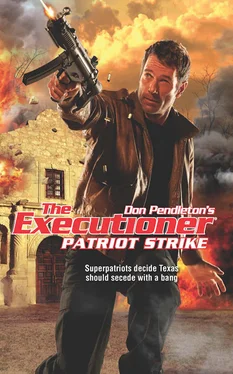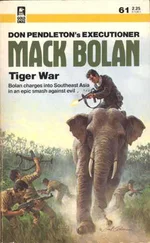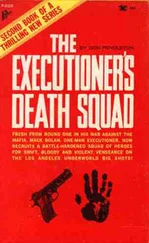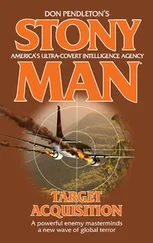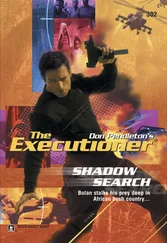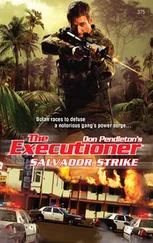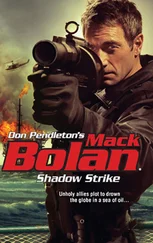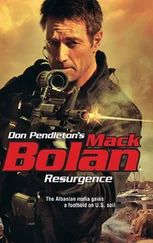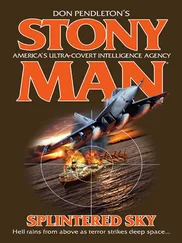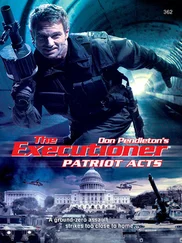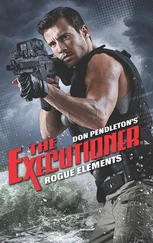Luttrell, by contrast, was a strapping six foot five, clearly a bodybuilder, with a blond buzz cut and narrow brows to match. His thick arms swarmed with typical tattoos—iron crosses, lightning bolts and swastikas, the usual—while the police files said his broad back bore a life-sized portrait of Der Führer dressed in shining armor, battle flag unfurled.
That had to have stung.
Photos depicting Crockett and Luttrell together showed a Mutt and Jeff team—almost comical until you thought about their records and their crazed philosophy. They had been dangerous as individuals, before they met. Together, Bolan reckoned, they were even worse.
The New Texas Republic had an estimated 650 members, half of those residing more or less full-time at Crockett’s Tom Green County compound. A few of the others were locked up on various charges, mostly weapons’ violations or domestic violence, with the remainder at large throughout Texas. Bolan viewed the available mug shots and candid photos, memorizing the angry faces for future reference, in case they crossed his path.
Finally he turned to Adlene Granger’s file. It surprised him to discover that she’d joined the U.S. Army out of high school, age eighteen, with the announced intent of making a career in uniform. The 9/11 strikes occurred when she was two years in, and she’d been posted to Afghanistan.
Two tours over there, with action around Kandahar and Tora Bora, had changed her mind about an army life, but not the uniform. She’d separated from the service at twenty-two and had joined the Texas Rangers when they had started taking on women to prove they were diverse. She’d earned her sergeant’s stripes last year, something to celebrate.
Now she had lost the final member of her family to unknown gunmen. She knew he needed to report something urgent, but he wouldn’t share details on the telephone. Ridgway was mentioned and the NTR, something about fissile material, but Jerod Granger had not lived to pass on anything more. Adlene had considered talking to her boss in Austin, then decided she should try her Uncle Hal, instead.
Bolan had no idea what he would find in Texas. Maybe nothing but the paranoid delusions of a dead man—but if that were true, who’d want him dead? From the description of his body and the crime scene, it had been a more-or-less professional elimination. At the very least, Bolan knew the shooters had experience. They’d killed before and had gotten away with it.
But maybe not this time.
Bolan wasn’t, strictly speaking, in the vengeance business. He wouldn’t mind taking out the team that had killed Jerod Granger—three different weapons had been confirmed—but that didn’t rate a call from Stony Man or a flight to San Antonio. He would assess the situation once he’d heard the Ranger’s story and decide on where to go from there.
Full speed ahead or back to Washington with a report for Hal, scrubbing the job.
If Ridgway, Lone Star and the NTR were up to something wicked—planning a catastrophe, in Jerod Granger’s words—Bolan would see the mission through. If it was all just smoke and mirrors, another zany pipe dream from the “New World Order” crowd, he’d walk away.
He heard his flight’s first boarding call, erased the CD and switched off his laptop, then headed toward the gate, hoping he wouldn’t have to share his row with some behemoth or an infant that would wail for fourteen hundred miles, across four states. A little peace and quiet would be nice.
But something told him that it wouldn’t last for long.
Chapter 3
San Antonio—Now
Rolling east on Crockett, Bolan soon found himself approaching Bowie Street. He could go north or south from there, not straight, since one-way Elm Street turned to meet him up ahead, barring access to the north-south lanes of Interstate 37.
Turning left on Bowie would propel them north to Fourth Street, back toward downtown San Antonio. A right-hand turn would lead south to Market Street, which then became South Bowie, just to keep drivers confused. South Bowie granted access to the interstate, but if Bolan stuck to surface streets, he would be leading his pursuers into residential neighborhoods.
No decent choices, either way.
Whichever way he chose, he risked having cops join the parade and putting bystanders in danger. If he made it to the freeway, it could add potential contact with the state’s highway patrol. The only law he likely wouldn’t see would be the Texas Rangers—and he had one of them riding in his shotgun seat.
With half a block to spare, he chose the right-hand turn. Given the hour, Bolan knew downtown would have more traffic on the streets, people returning home from restaurants, concerts and theaters, whatever. More police patrols, for sure, keeping an eye on high-rent stores and offices. If he could lead the hunters south, then west toward the San Antonio River, the street map he’d memorized during his flight told Bolan he would find dead ground, where they could stop and settle it.
The hunters hadn’t lost Bolan when he had turned onto South Bowie, but they hadn’t started shooting, either. That was good news, and he wasted no time trying to interpret it.
“Who’s likely to be tracking you?” he asked his passenger.
She answered with a question of her own. “What were you told about this deal?”
“The basics. Ridgway and the NTR.”
“Okay. It could be either one of them, assuming there’s a difference. Lamar won’t soil his hands, but he could give the order. Might demand a video, for his enjoyment over cocktails later.”
“Not police,” Bolan confirmed.
“No lights or sirens,” she replied. “No way.”
That made it easier. At the beginning of his one-man war against the Mafia, Bolan had drawn a line he would never cross. When dealing with police at any level, in any given situation, he would not use deadly force. Whether they qualified as heroes or were nothing more than thugs in uniform, he treated law enforcement officers as soldiers on the same side. Bolan would not spill their blood, even in self-defense.
He’d sent a few to prison, sure, but that was something else entirely.
Mercenary killers, on the other hand, were fair game whenever and wherever they crossed paths with the Executioner.
South Bowie reached East Commerce Street, and Bolan took a right there, racing west to catch South Alamo. The chase car hung in there, trying to ride his bumper, but the lighter RAV4 kept a few car lengths between them, weaving just enough to cut the hunters off from passing by on either side, where they could get a clean shot at the smaller SUV.
Not yet.
The farther they could go without a shot fired or a squad car joining in the chase, the better Bolan liked it. They would have their showdown soon enough, in true Wild West tradition, more or less.
South Alamo took Bolan and Granger on a long southwestern swing through tree-lined residential areas, rolling inexorably toward the river and a strip of warehouses that served its traffic. There were few pedestrians around as they passed by darkened homes, some with the flicker of a television screen behind drawn curtains, others with their occupants asleep before another workday in the city. Maybe roaring engines caused a ripple in their dreams, but Bolan was satisfied to spare them from a running firefight.
“Gaining,” Granger cautioned. Nothing that his rearview hadn’t shown him.
“Just a little longer,” he replied.
“Why aren’t they shooting?”
“Maybe someone wants to have a word with you.”
“That’s not going to happen.”
Not if I can help it, Bolan thought, and squeezed a bit more speed from the Toyota’s growling engine.
He could see a bridge across the river coming up, a strip mall to his left once they’d crossed it and a factory of some kind to his right, with giant stacks and at least a dozen semitrailers lined up outside, waiting for loads. A triple set of railroad tracks ran through the plant and disappeared beneath an elevated walkway. A sign atop the tallest portion of the factory read Pioneer. Another, set above the three tall stacks, read White Wings.
Читать дальше
